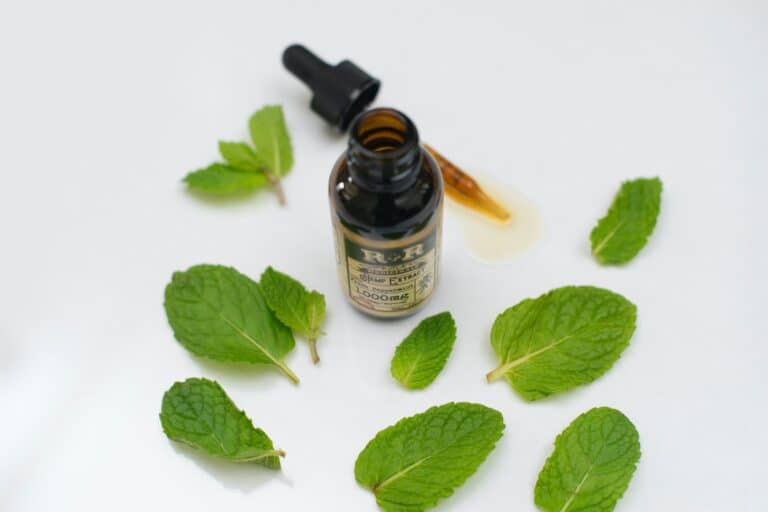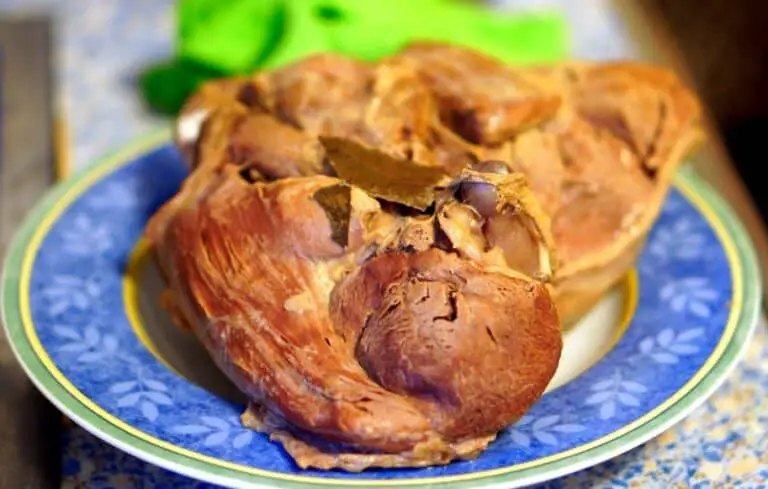What Do ICE Crystals in Meat Signify?
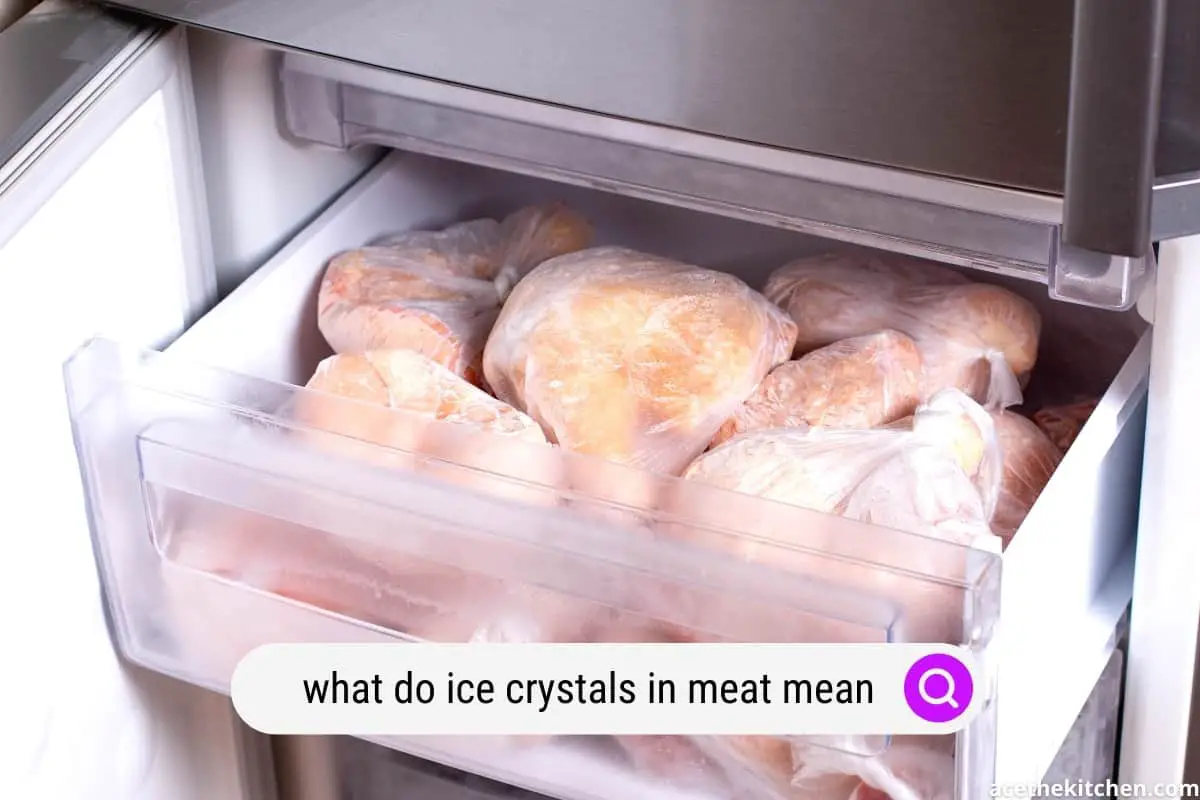
Freezing is a fantastic way to preserve food for several months. You can save money on groceries by shopping sales and freezing your extra portions.
One aspect of this method is assuring you package foods properly and use them within a reasonable time. Sometimes you’ll go to pull some meat from the freezer for dinner and discover small ice crystals all over it.
This probably leads you to wonder why there are ice crystals in your meat and if it is still safe to consume.
Read on to find the answer to your question. What do ice crystals in meat signify?
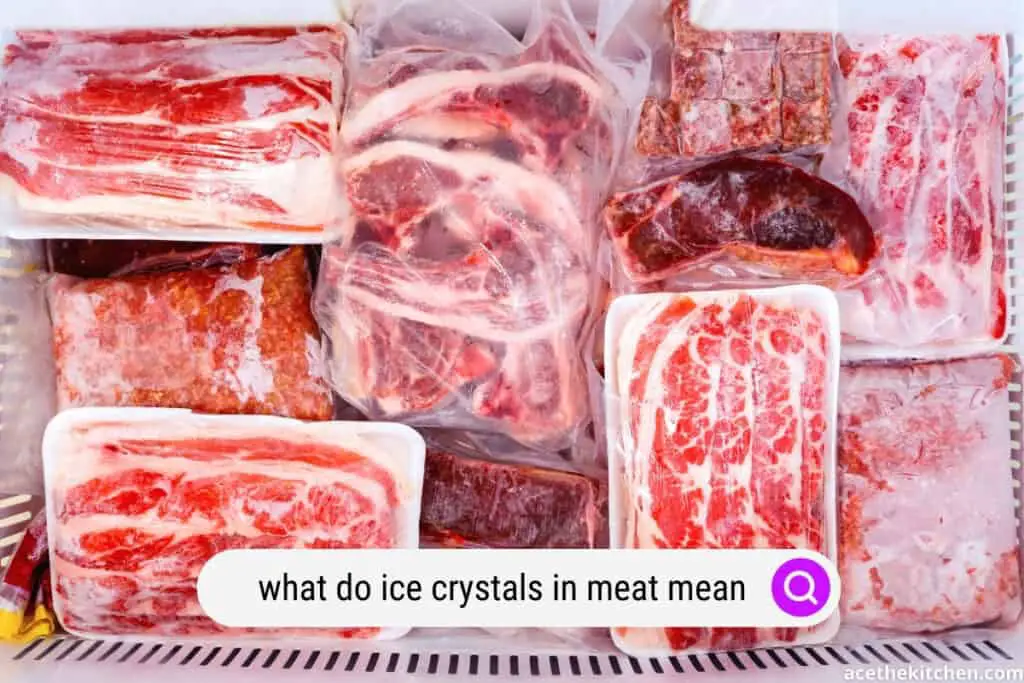
Ice Crystals in Meat Indicate Freezer Burn
You’ve probably heard the term freezer burn before. When frozen foods have a layer of tiny ice crystals on the outside, we say that it has freezer burn.
What Causes Freezer Burn?
All foods that you can freeze contain water, including meat. When you place the food in the freezer, the water in all the cells freezes solid, and in turn the whole piece of meat is frozen.
Ice crystals on the surface of the meat form when condensation refreezes. Condensation gathers on the surface of your frozen foods for several reasons.
Can You Eat Meat That Has Ice Crystals?
Yes. A small amount of freezer burn on your meat is safe to consume. It will affect the flavor and texture, though.
There are a few scenarios where you should consider not eating meat with ice crystals. I’ll share a few of those later.

How To Prevent Freezer Burn
While food safety is of utmost importance when you cook at home, you probably want to preserve taste quality too. Now that you know that ice crystals in meat signify freezer burn, I’ll share a few strategies for preventing it.
Don’t Put Hot Food in the Freezer
I mentioned earlier that condensation on food causes ice crystals to form on the surface. Hot food that is still emitting steam creates lots of moisture in the freezer. Those vapors can settle on all the food in your freezer and cause freezer burn.
Let hot food chill in your refrigerator before moving it to the freezer.
Keep Your Freezer at 0° Fahrenheit
The FDA recommends freezing food at 0° F. Water freezes at 32° F. Keeping your freezer set to 0° prevents minor temperature fluctuations from causing thawing. Thawing causes condensation which turns to freezer burn.
Some refrigerators have a specific temperature control allowing you to set it to 0°. If your freezer has a dial with low, medium, and high settings, purchase a thermometer to monitor the internal temperature.

Keep Air Out of the Packaging
When you buy fresh meat at the grocery store, the thin plastic wrap and foam tray are not suitable to keep the freezer burn at bay. Using freezer storage bags or a vacuum packing machine is excellent for repacking store-bought meat.
When using freezer bags, wrap individual pieces of meat in plastic wrap, foil, or freezer paper. Then squeeze out as much air from the bag as you can. The less air around the meat, the less likely condensation can gather and refreeze.
Keep the Freezer Closed as Much as Possible
Opening your freezer frequently causes temperature fluctuation which leads to condensation. What does condensation lead to? Freezer burn.
Open the Door Fewer Times
Your main enemies in preventing freezer burn are partial thawing and condensation. Decreasing the number of times you open the freezer in a day helps to keep the temperature stable. It also keeps the humidity consistent.
One strategy for decreasing the number of times you need to look in your freezer is meal planning. Opening the freezer can be a one-stop shop when you know precisely what items you need.
The only exception would be retrieving ice for drinks. Refrigerators with an in-the-door ice dispenser mitigate this problem nicely.
Don’t Hold the Door Open for Long Periods
The length of time you keep the freezer door open also allows for humidity and temperature fluctuation. I’ve been known to make my kids decide which flavor of ice pop they want before opening the door.
Close the Door Securely
My current refrigerator has a door alarm. I didn’t realize how often I unintentionally leave the door open slightly until this feature brought it to my attention.
Leaving the door open slightly can disrupt the temperature, humidity, and airflow in the freezer, leading to freezer burn. Always be sure to close the door securely. I give my chest freezer lid a hearty slam when I’ve finished pulling out the meat for dinner.
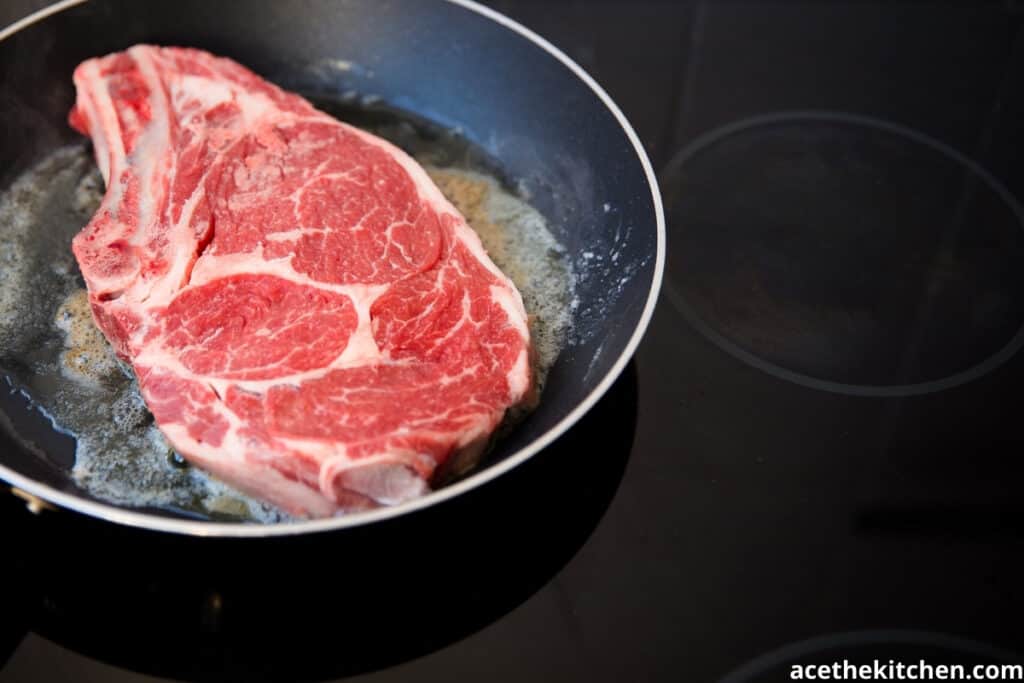
Store Frozen Meat in Small Portions
Your goal is to keep the temperature in your freezer consistent. Large portions of meat take longer to freeze solid. When you add a big item to your freezer, the temperature drops temporarily until the freezer can do its work.
Freezing smaller portions shortens the time that the temperature lowers.
Some meats like whole poultry and roasts must go in the freezer in large chunks unless you want to break them down. Make sure they are at least as cold at your refrigerator temperature before adding them to the freezer. They warm up during transportation from the store, so put them in the refrigerator for a while when you get home.
Separate and individually freeze smaller pieces of meat like steaks and chicken quarters.
Don’t Overstock Your Freezer
Freezers function most efficiently at 75% capacity. Keeping the cold air flowing around frozen items allows your freezer to keep everything solid and use the least energy.
Overpacking your freezer can lead to warm spots and partial thawing. As the freezer kicks on to readjust the temperature, those partially thawed spots become freezer burnt. Do your best to keep your freezer about 75% full with plants of airflow around the items and the cooling vent.
Prepare Frozen Food Sooner
You can prevent freezer burn and manage your freezer’s capacity by using frozen meat within 3-12 months of purchasing it, depending on the type of meat.
Choosing Meat at the Grocery Store
What about choosing meat from the freezer section of the grocery store? You want to consider a few possibilities beyond freezer burn if you are shopping for meat that someone else packaged and froze.
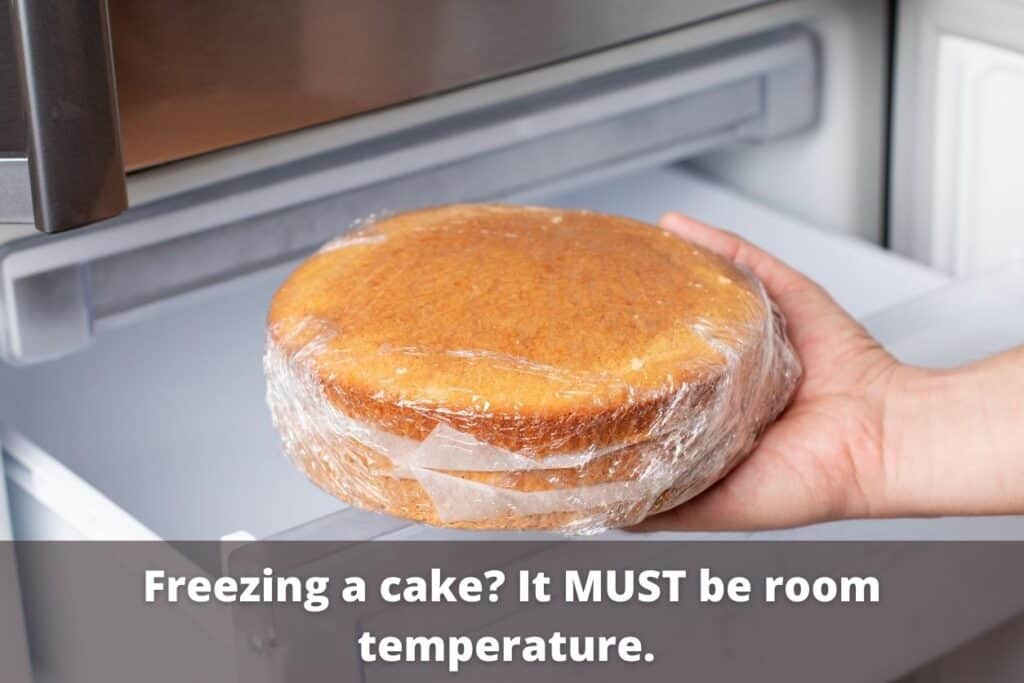
How Big Are the Ice Crystals?
Small ice crystals in meat at the store mean that meat has some freezer burn. It is still safe to eat, but it may not have optimal taste and quality. Freezer burn may mean the item has been in the freezer too long.
This is why it’s important to check the dates on the meat before purchasing. Though grocery stores do go through their meat and should, if they follow policy, remove items that are too old, it’s still wise to check before grabbing and going. Generally, chicken is good 1-2 days past the sell-by date, and other types of meat around 3-5.
For the best quality meat with the least chance of freezer burn, buy the most recently packaged.
Large ice crystals in meat can indicate that the meat is contaminated. Larger crystals form when a portion of frozen food has thawed and refrozen. More condensation on the surface refreezes into larger ice crystals. Thawing and refreezing allow bacteria to grow in the meat, so stay well away from large crystals!

